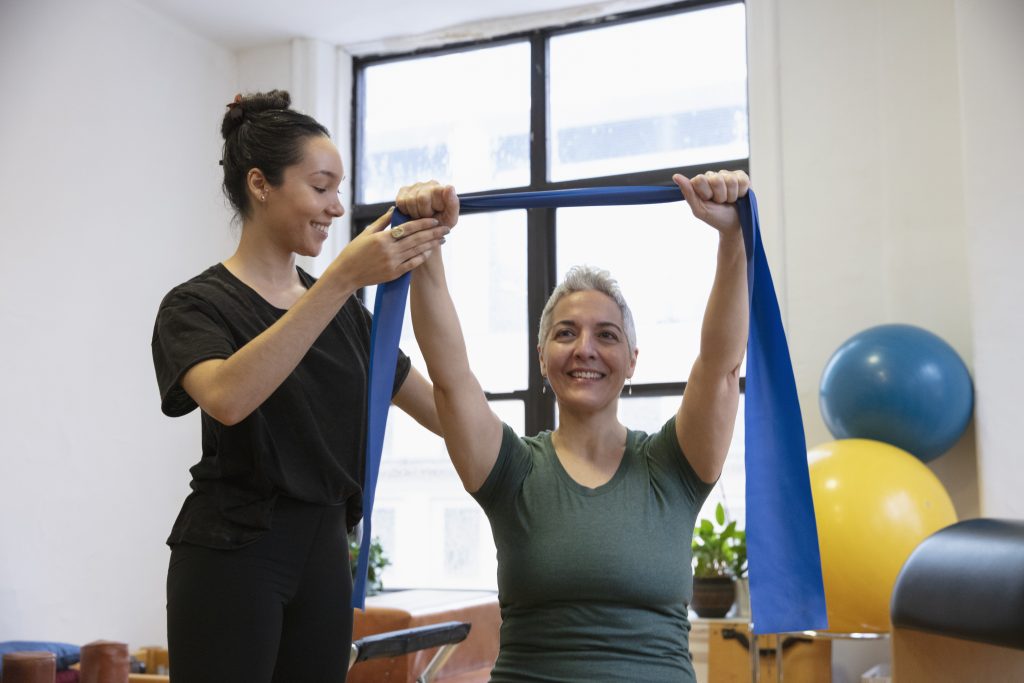Not everything you might experience during pregnancy or as a change in your body after giving birth is “normal.” As physical therapists, we’re amazed at the beauty and resilience of the human body, and women who go through pregnancy and childbirth experience the rapid, dramatic changes their bodies can make firsthand.
However, not all of these changes result in positive effects in the long term. That’s why, no matter how silly or small your concern about your changing health might be, it’s always okay to talk about it with a physical therapist.
Women’s health specialties
We’re passionate about providing targeted, personalized care to women of all ages, through the dramatic changes of pregnancy and childbirth to the gradual onset of conditions like osteoporosis. Our comprehensive physical therapy techniques and customizable treatment options, including virtual physical therapy, enable us to make benefits accessible to as many women as possible.
Pre-natal and post-partum treatments
During and after pregnancy, you’ll likely experience a lot of new or different aches and pains, some of which are expected and some of which make it harder to live the life you want to live. No matter what kind of pain or discomfort you might be facing, there is often relief through physical therapy, including conditions like:
- Low back and hip pain
- Sciatica
- Foot pain
- Carpal tunnel syndrome
- Swelling in the legs and feet
- Stress or urge incontinence
- Pelvic and groin pain
Pain that others might say is “normal” may not be, which is why being able to talk to a medical professional about your experience during and after pregnancy is helpful and sometimes necessary. Our experienced women’s health experts listen to your concerns and take your medical history seriously when advising a specific course of treatment that often leads to surprisingly positive outcomes for pain relief and quality of life improvement.
Osteoporosis education and treatment
Although everyone experiences changes during the aging process, women have particular risk factors and musculoskeletal conditions that deserve specialist care. One common condition we see at our clinics is osteoporosis, whether at the beginning stages or currently causing life-altering symptoms.
Our physical therapists can walk you through what to expect given your medical history for how you might mitigate or prevent the risks of osteoporosis as well as live with the symptoms it might be producing.
Core and pelvic floor strength training
Issues and inconsistencies with urination is a problem that many women assume only they have trouble with. In fact, pelvic floor weakness, stress or urge incontinence, and increased urinary frequency are among some of the most common conditions treated successfully through physical therapy.
Our tailored pelvic floor strengthening exercises can address your specific symptoms and concerns for your unique fitness and mobility level.
What to Expect from Your Women’s Health Appointment
During your initial appointment, you’ll review your medical history and current symptoms—we hope you feel free to talk about anything and everything you might be experiencing, as this helps both you and your therapist gain a holistic understanding of your current health concerns. In some cases, a physical evaluation may be required, as well as a rundown of your medical history. You’ll then get started learning the exercises and techniques your therapist recommends and set up an appointment schedule going forward. They’ll provide initial expectations for recovery time and final results of treatment.
No matter what you’re going through, you don’t have to settle for pain or a reduced quality of life. Take the first step toward healing by calling one of our offices near you or requesting an appointment online today.

